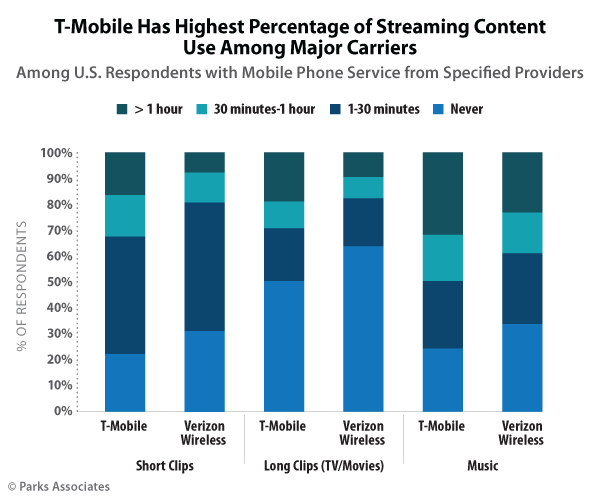Binge On: T-Mobile Continues to Tempt Customers with Unique Perks
It seems this fall has been a great time for streaming services in the United States. Google has introduced its ad-free YouTube Red and YouTube Music services, available free of charge to Google Play subscribers, and now T-Mobile has expanded its unCarrier approach to video as well as music.
I'm talking about T-Mobile's new Binge On feature, available to subscribers of T-Mobile's 6GB plans or higher. Last year T-Mobile introduced Music Freedom, a feature that offered unlimited access to T-Mobile's streaming music partners. A T-Mobile subscriber could access one of the partner apps and not use up any of their data allotment. According to T-Mobile, any legal streaming service was welcome to partner with them - there were no exclusivity deals or charges to the music services, keeping the offer in line with net neutrality principles. Binge On applies this same model to video content.
Of course, all of T-Mobile's data plans are technically unlimited. However, when T-Mobile abolished overages it switched to a new tiered model: speed caps. Under this model subscribers to T-Mobile's data plans will have full 4G/LTE speed access until they hit their data limit and then have their speeds reduced to the 2G level afterwards. The presence of this speed cap allows T-Mobile to offer pricing security to subscribers while still managing their data traffic and preserving quality of service for all users.
Users of Music Freedom and Binge On don't have to worry about their streaming affecting their 4G allotment. Music Freedom is available to of all of T-Mobile's Simple Choice subscribers, with plans starting at $50 per month for 2GB of data. Binge On, as mentioned above, is available to those with 6GB plans on up, beginning at $65 per month. This is a very compelling offer for new consumers, and will likely serve as an excellent enticement for existing 2GB subscribers to move to larger data plans.
After all, half of T-Mobile subscribers from broadband households already watch TV or movies on their smartphone daily. Similarly, more than a quarter of T-Mobile customers already stream short video clips daily. And now, a year after the introduction of Music Freedom, as much as 76% of T-Mobile customers from broadband households stream music every day. In fact, according to data from Parks Associates, T-Mobile has the highest percentage of streaming content use among the major U.S. carriers.

However, this new feature does raise some interesting questions about T-Mobile's ability to regulate its data traffic if users of Binge On take them at their word. The cap-free model has seemingly worked out fine for music streaming, but video is a horse of a different color. Video content takes up far more bandwidth than a simple MP3. If T-Mobile users are all streaming video at the same time, this could cause network congestion and lower overall speeds.
T-Mobile has introduced a new data optimization technology that reduces the bandwidth required for video content and restricted its Binge On feature to DVD-quality 480p resolution - higher quality video, such as HD, is automatically compressed - but the main issue here is with overall usage. Since the beginning of the unCarrier movement, T-Mobile has grown quite a bit. As of the end of September, a little more than 61 million people were on their network - up 15.7% year over year. Even with Binge On's zero-rating not available on T-Mobile's lowest data tier, that's still quite a few people. Can you imagine what the usage will be like when fans are streaming NBC Sports or DirectTV during the Superbowl?
With the new net neutrality laws, throttling or prioritizing data is no longer allowed. This is good for consumers, as it creates a level playing ground for competing services and ensures that subscribers get the service they pay for. It does create a challenge for mobile operators looking to regulate traffic. It will be interesting to see how T-Mobile decides to tackle this issue, even as it grows yet more tempting to consumers.
Next: Bumps in the Road: On the Way to Autonomous Driving
Previous: Connected Cars and the Smart Home: Crossover Use Cases
Comments
-
Be the first to leave a comment.
Post a Comment
Have a comment? Login or create an account to start a discussion.


